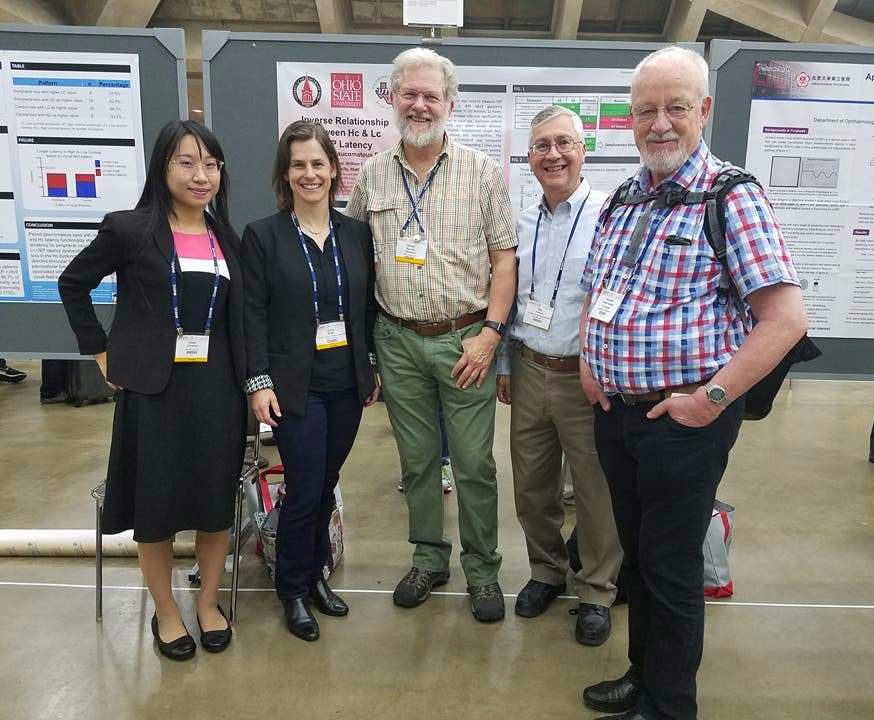
Helping patients with glaucoma is a passion of Dr. Susan Johnson. She dedicated her graduate program to study glaucoma under university glaucoma professors and a world-renowned glaucoma surgeon in San Antonio. She has conducted, published, and assisted with many glaucoma research studies and continues to do so on her spare time. Have you been told that your family has glaucoma? Are you a glaucoma suspect? Do you need a glaucoma specialist in Boerne? Dr. Johnson would be happy to help you and answer your questions.
What is Glaucoma?
Glaucoma is a group of eye disorders that lead to progressive damage to the optic nerve. People with glaucoma can lose nerve tissue, resulting in vision loss.
The optic nerve is a bundle of about 1 million individual nerve fibers that transmits the visual signals from the eye to the brain. In the most common form of glaucoma, primary open-angle glaucoma, the fluid pressure inside the eye increases. This increase in pressure may cause progressive damage to the optic nerve and loss of nerve fibers. Vision loss may result. Advanced glaucoma may even cause blindness.

Glaucoma is the second-leading cause of blindness in the U.S. It most often occurs in people over age 40, although an infant (congenital) form of glaucoma exists. People with a family history of glaucoma, African Americans over the age of 40 and Hispanics over the age of 60 have an increased risk of developing glaucoma. Other risk factors include thinner corneas, chronic eye inflammation and taking medications that increase the pressure in the eyes.
The most common form of glaucoma, primary open-angle glaucoma, develops slowly and usually without any symptoms. Many people are not aware they have the condition until they have significant vision loss. Initially, glaucoma affects peripheral or side vision, but it can advance to central vision loss. If left untreated, glaucoma can lead to significant vision loss in both eyes, and may even lead to blindness.
A less common type of glaucoma, acute angle-closure glaucoma, usually occurs abruptly due to a rapid increase of pressure in the eye. Its symptoms may include severe eye pain, nausea, redness in the eye, seeing halos or colored rings around lights and blurred vision. This is an emergency condition in which severe vision loss can occur quickly; see your optometrist immediately.
Glaucoma cannot currently be prevented. But if it is diagnosed and treated early, it can usually be controlled. Medication or surgery can slow or prevent further vision loss.
However, vision already lost to glaucoma cannot be restored. That is why Boerne Vision Center recommends an annual eye examination for people at risk for glaucoma. Depending on your specific condition, Dr. Johnson may recommend more frequent examinations and testing.
Dr. Johnson’s published abstracts, articles, articles, and posters on glaucoma
Susan Ly Johnson and Majcher, Carolyn. “Imaging Motion: a Review of OCT-A.” Imaging Motion: a Review of OCT-A. Review of Optometry, 15 Mar. 2017. Web.
“Inverse Relationship between Hc & Lc VEP Latency in Paired Glaucomatous Eyes.” S.L. Johnson, C. Majcher, R. Trevino, W.E. Sponsel, M. Riley. ARVO Annual Meeting, Powerful Connections: Vision Research and Online Networking, Baltimore, Maryland. May 2017.
“Short-term Effect of Dorzolamide on Optical Coherence Tomography Angiography (OCTA) Macular Perfusion in Healthy Eyes.” C. Majcher, R. Trevino, W.E. Sponsel, M. Riley, A. Dosch, W. Juett, K. Price, S.L. Johnson, A. Henry. ARVO Annual Meeting, Powerful Connections: Vision Research and Online Networking, Baltimore, Maryland. May 2017.
“Alteration in anterior chamber depth and volume following postural change from upright to right and left lateral decubitus positions.” S. Ly, D. Lopez, C. Majcher, R. Trevino, W.E. Sponsel, D. Caceres, R. Golas, L. Smiley. ARVO Annual Meeting, Powerful Connections: Vision Research and Online Networking, Denver, Colorado. May 2015.
“Persistence of intraocular pressure elevation following postural change from upright to right and left lateral decubitus positions.” C. Majcher, S. Ly, D. Lopez, R. Trevino, W.E. Sponsel, D. Caceres, R. Golas, L. Smiley. ARVO Annual Meeting, Powerful Connections: Vision Research and Online Networking, Denver, Colorado. May 2015.
“Short-term effect of topical proparacaine on rebound tonometry in humans.” D. Lopez, C. Majcher, S. Ly, R. Trevino, W.E. Sponsel, D. Caceres, R. Golas, L. Smiley. ARVO Annual Meeting, Powerful Connections: Vision Research and Online Networking, Denver, Colorado. May 2015.
“Changes in choroidal thickness and morphology when assuming the right lateral decubitus position.” R. Trevino, C. Majcher, S. Ly, D. Lopez, T. Lehr, D. Caceres, R. Golas. American Academy of Optometry, Denver, Colorado. November 2014.
“Choroidal morphology changes in response to changes in body position.” R. Trevino, C. Majcher, S. Ly, D. Lopez, T. Lehr. American Optometric Association, Philadelphia, Pennsylvania. June 2014.
“Choroidal morphology changes in response to changes in body position.” R. Trevino, C. Majcher, S. Ly, D. Lopez, T. Lehr, J. San Roman-Garcia. The University of the Incarnate Word – research week symposium, San Antonio, Texas. February 2014.
____
Dr. Johnson is a proud member of the American Optometric Association (AOA). Some content are copyrighted information courtesy of the AOA.


